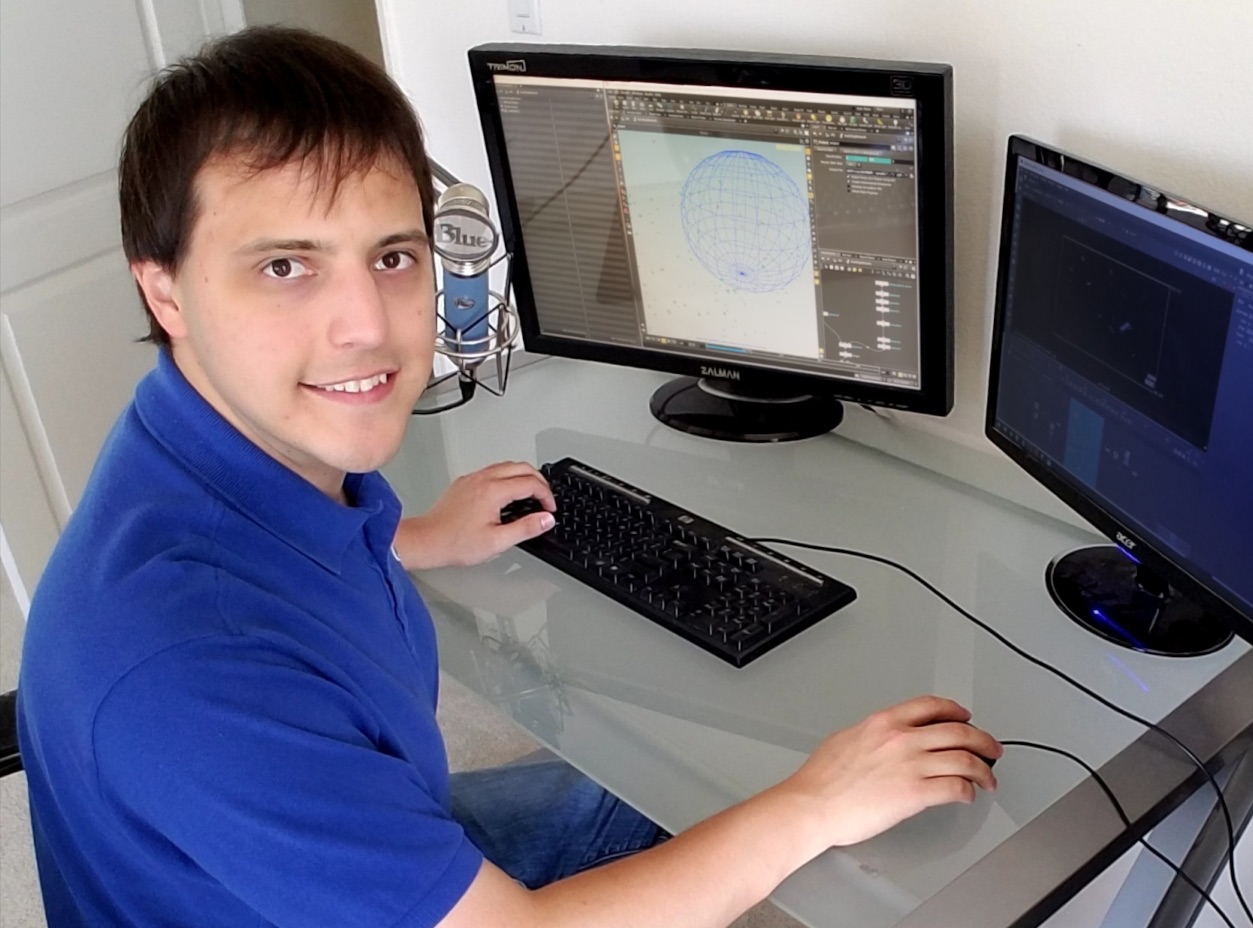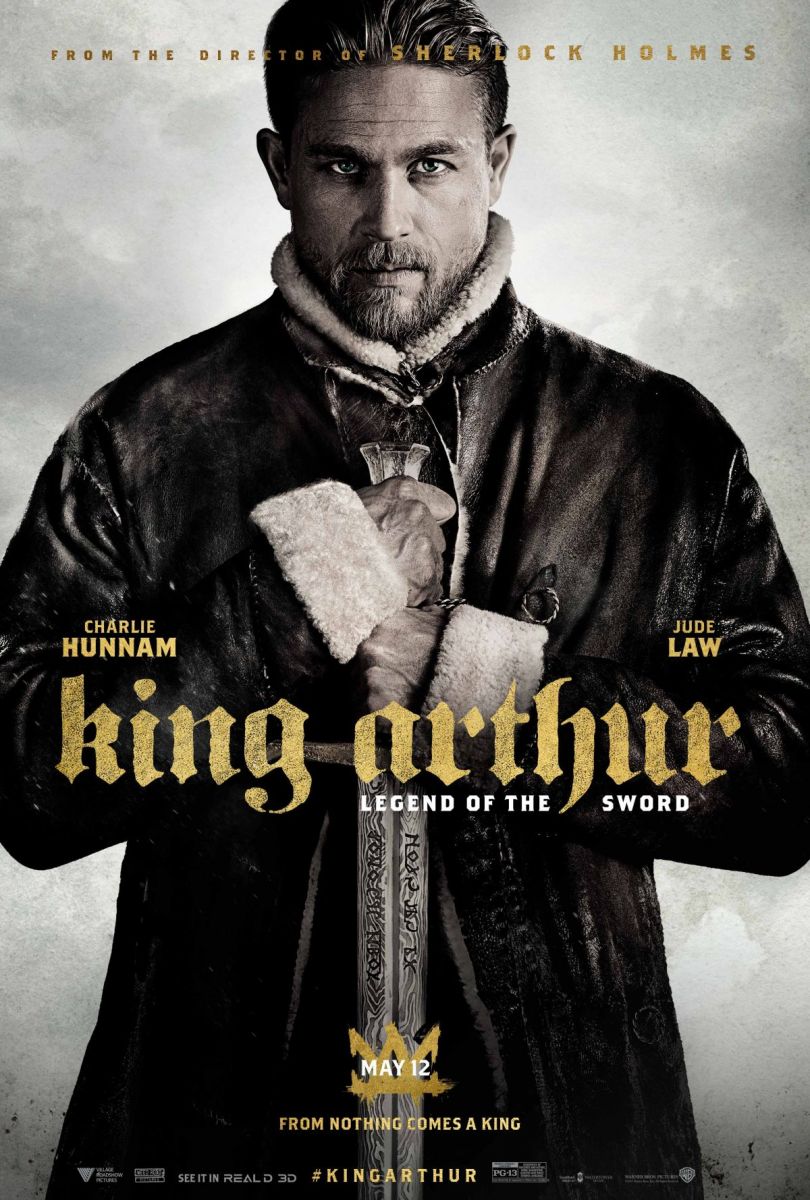
Getting one’s foot in the door in the highly competitive film industry requires the acquisition of skills which are multidisciplinary in nature, gaining experience by working with classmates and student organizations, and networking with industry professionals, says Andrew Kennedy, a Purdue computer graphics technology graduate (BS ’12, MS ’14).
Kennedy leverages his Purdue experience while working on a variety of major Hollywood films as a technical director at Stereo D, a 3-D film production services company. During the last two years, Kennedy’s film credits include “Captain America: Civil War,” “X-Men: Apocalypse,” “Star Trek Beyond,” “Rogue One: A Star Wars Story,” “The Fate of the Furious,” the newly-released “Guardians of the Galaxy Vol. 2,” and the upcoming "King Arthur: Legend of the Sword."
This spring, Kennedy started working with Carlos Morales, associate professor of computer graphics technology and director of the Visual Effects Lab, as a remote instructor for students in CGT 24600 (Compositing I), CGT 34600 (Digital Video and Audio), and CGT 44600 (Post-Production And Special Effects For Computer Animation).
In an email interview, Kennedy spoke about how his Purdue degrees prepared him for a career in the film industry and his recent work as a remote instructor for current students.
Question: What first got you interested in coming to Purdue to major in CGT? Why did you stay on for your master’s degree?
Andrew Kennedy: I have always been into sci-fi and fantasy with heavy visual effects. “Star Wars,” “Firefly,” “Lord of the Rings,” and “Stargate” were favorites of mine, but I hadn’t realized that I could work on films like those as a career. After shopping around the different colleges at Purdue, I found the Department of Computer Graphics Technology.
I became interested in both the artistic and technical sides of computer graphics. The types of jobs that I wanted required skills in both art and technology. They require a keen eye for detail as well as problem-solving, programming, and research skills. David Whittinghill (associate professor of computer graphics technology) and Bedrich Benes (professor of computer graphics technology) both encouraged me to further develop those skills by staying in CGT for the master’s program.
Question: In less than a decade, Stereo D has advanced from its initial formation to working with major motion picture studios on some of the biggest franchises in film, including “Star Wars,” “Star Trek,” “X-Men,” and the Marvel Cinematic Universe (“Iron Man,” “The Avengers,” “Thor,” etc.). How did your company get to where it is today?
Kennedy: Stereo D was founded in 2009 by William Sherak to create stereoscopic 3-D conversions of 2-D feature films. Early on, director James Cameron, a proponent of 3-D filmmaking, chose Stereo D to dimensionalize his seminal film “Titanic” for a re-release in the United States and for its first-ever theatrical release in China. The 3-D version of the film was visually stunning, and the re-release and China openings were wildly successful. Deluxe Entertainment Services Group, the world’s largest provider of post-production services, acquired Stereo D in 2011, providing the company with the backin to continue its technological innovations, expand its pool of artists, and create customized pipelines that filmmakers loved and studios saw as efficient and reliable. Stereo D quickly became the choice of the world’s most respected filmmakers, and the movies we’ve been fortunate enough to work on bear that out. We employ over 1500 artists, producers, and technicians in studios in three countries, and we work with all the major Hollywood studios.
Question: How did Stereo D discover you and invite you to join the team?
Kennedy: I have been attending the Creative Talent Network Expo (CTNX) in Burbank, California, for the past few years. It’s a weekend conference for artists in the animation and visual effects (VFX) fields to network, share their work, and explore job opportunities. I met with Stereo D during CTNX 2015 and was very impressed with the company. There was an opening in early 2016 and they hired me as a technical assistant in the pipeline team. My responsibilities include helping artists work through difficult shots and maintaining proprietary in-house tools that our producers use.
 Question: You have been credited as a stereoscopic technical assistant (TA) on some films and as stereoscopic technical director (TD) on your more recent films. What do the roles entail? What’s a typical day on the job like, if there is such a thing?
Question: You have been credited as a stereoscopic technical assistant (TA) on some films and as stereoscopic technical director (TD) on your more recent films. What do the roles entail? What’s a typical day on the job like, if there is such a thing?
Kennedy: Well, you hit the nail on the head there — we definitely don’t have anything you could call a typical day! Even amongst all the TDs, we all have different backgrounds and skill sets. A very general description of my job is “problem-solver.” I help our artists by making new software tools for them, do visual effects work, and troubleshoot problems with shots. Since most of our studio’s work is 3-D conversion of 2-D movies, we have to integrate our studio with the tail-end of all of each client’s work. I also spend a lot of time at the beginning of new shows figuring out how we can customize our workflows to fit our client’s needs.
As far as the job title is concerned, TA/TD roles vary at every company. “TA” and “TD” are similar to “junior” and “senior” titles here at Stereo D.
Question: Please describe a challenge you or your team faced when working on a particular film and how your Purdue CGT background helped you overcome the challenge.
Kennedy: We occasionally collaborate with our clients to set up virtual 3-D “cameras” in fully computer-generated (CG) shots. This requires a very different skillset than the normal work we do. I happened to be one of very few people at our studio who had experience doing that. That’s all thanks to CGT 34000 (Digital Lighting and Rendering for Computer Animation). The very first project we did was to create a full CG still-life scene in 3-D. Later, as a graduate teaching assistant, I taught the technique to undergraduate students.
I remember thinking it was such a pain to learn at the time and that I was never going to use it in real life. I’m now the go-to person for that job at the studio and I love doing it. Thank you, Ray Hassan (clinical assistant professor of computer graphics technology)!
In a more general sense, CGT promoted a culture of research, problem-solving, and creativity. Those are tools I need to use every single day to be able to do my job, especially when each problem is unique.
Question: When most of us hear that a new movie from a favorite series is coming — for me, it’s any new “Star Trek” or “Star Wars” film — we wait for months in anticipation and gladly endure long lines at the theater to get tickets on opening weekend. You get to see blockbuster films (or at least parts of them) long before we do. How hard is it to keep details about the films you work on from family and friends? And how rewarding is it to see your name in the credits?
Kennedy: When I’m working, I see most things out of context, so I’m usually just as eager to learn the story as you are on opening night. I don’t like spoilers and I respect the right of the filmmakers to present their final product as they intended, so it’s not hard to keep the details to myself. The tough thing is not getting to tell people that I’m working on all these exciting movies until they come out. I worked on “Star Wars” for almost a year and couldn’t tell anybody!
My first on-screen credit was for “Star Trek Beyond.” The first time I saw my name scroll by in the credits, it was a surreal moment. It’s such a great feeling of accomplishment to see your name alongside everyone else that you worked with to get the movie done.
Question: You’ve been working lately with Carlos Morales in an instructional role for current CGT students. How did this collaboration begin?
Kennedy: Working with Carlos has been great! I first started working with him in grad school, and it continued after graduation for about a year when I worked in the production studio side of his lab. We’ve worked on dozens of projects together, including the curriculum proposals for the current visual effects compositing and effects technical direction programs.
Earlier this year, I came on board as a remote instructor for the digital video compositing courses. I do video hangouts with small groups of students and also large group presentations where I’ll do a live demo of VFX work. This lets me see what they’re working on and give advice on how to approach different problems. I love the opportunity to be a resource for students, since I was in their shoes just a few years ago. I had so much help throughout my education from friends that had gone before me, and I’m grateful for the opportunity to be able to give back.
Question: What advice would you give to current Purdue Polytechnic students who want to pursue careers in the film or television industry?
Kennedy: You have to work really, really hard to get into this industry. It’s an exciting field of work, but it’s also extremely competitive.
Learn everything you can. The industry you are trying to get into is changing every day, so multidisciplinary skillsets aren’t a luxury, they’re a necessity. Network everywhere! Join Purdue SIGGRAPH (and other similar organizations) and get involved with your classmates. Save up your money and go to the Creative Talent Network Expo. Find projects to collaborate on. Find people who do what you want to do and reach out to them.
Above all else, be determined and don’t give up!
Update (December 18, 2017):
Since this story was first published on May 11, 2017, Kennedy's work has been featured in several additional movies, including "Spider-Man: Homecoming," "Kingsman: The Golden Circle," "Blade Runner 2049," and "Thor: Ragnarok." For "Star Wars: The Last Jedi," Kennedy received his first credit as senior technical director.
